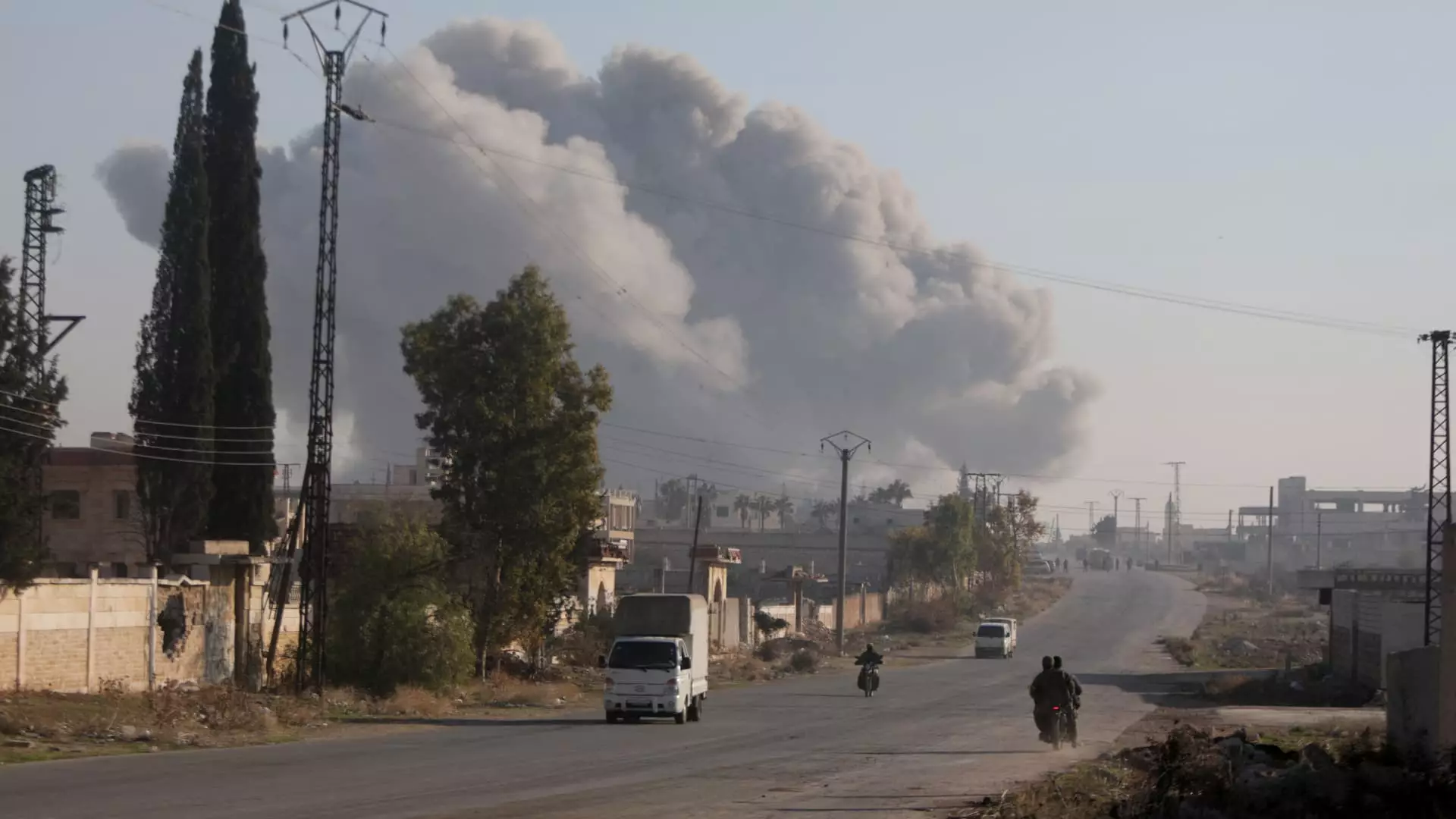In an unexpected turn of events, Aleppo, Syria’s largest city, has once again become a focal point of conflict as insurgent forces have made significant inroads against government troops, marking the first clashes in over seven years. This resurgence has heightened tensions not only within Aleppo but also in a region already burdened by multiple layers of conflict. As the Syrian civil war enters a new phase, complexities surrounding international involvement, regional dynamics, and the implications for civilians continue to evolve.
On a notably turbulent Friday, reports emerged of insurgents engaging in fierce combat with government forces, culminating in a dramatic series of movements that sent residents of Aleppo into a state of panic. After a carefully coordinated offensive initiated midweek, troops from various factions swept through adjacent towns, igniting fear and leading many families to flee from the city’s precarious borders. Eyewitnesses relayed harrowing accounts of missile strikes and sustained gunfire, illuminating the dangers that Aleppo’s citizens are once again facing.
Analysts observing the situation noted that this onslaught had not occurred since the insurgents were expelled from eastern Aleppo neighborhoods in 2016, following a brutal military campaign backed by Russia and Iran. The scale of recent hostilities, coupled with the apparent disintegration of government defenses, raises fundamental questions about the Syrian regime’s capability and resilience. The Syrian Observatory for Human Rights reported a grim toll, with multiple casualties on both sides, underscoring the urgency of the current crisis.
The resurgence of insurgent activity in Aleppo occurs simultaneously with other regional conflicts, notably in Gaza and Lebanon, where Israel has intensified military actions against Hezbollah and Iranian interests. This broader environment of volatility reveals how interconnected these conflicts are, with repercussions reverberating throughout the Middle East. The insurgents, led by the militant group Hayat Tahrir al-Sham (HTS), have seized this moment of opportunity—capitalizing on the preoccupations of Iranian-backed forces who are stretched thin by ongoing skirmishes elsewhere.
Experts like Dareen Khalifa from the International Crisis Group provide insight into this unexpected offensive, noting that many had anticipated some level of military action but were taken aback by the speed at which insurgents advanced. With both Russia and Iran embroiled in other conflicts, their lack of immediate support for the Damascus regime has seemingly emboldened the opposition factions.
Turkey’s involvement in the Syrian civil war adds another layer of complexity. Historically a supporter of opposition groups, Turkey’s attempts to mediate and maintain a ceasefire in the region have fallen short, leaving the field wide open for further confrontations. Analysts suggest that the recent military maneuvers by insurgents were partly enabled by perceived lapses in Turkish authority at a time when government forces were advancing against the opposition. The ambitions of insurgent factions to reclaim control play directly into the larger narrative of territorial integrity and political influence in the region.
Furthermore, the strategic significance of Aleppo cannot be understated. Once the heart of Syria’s economic activity, its fall to opposition forces would represent a severe blow to the current regime, not just militarily but symbolically as well. The ongoing shift in balance between the opposition and government forces highlights the potential for significant realignments in military and political control moving forward.
As the fighting escalates, the Syrian government has condemned the insurgent advances, framing them as direct violations of Syria’s sovereignty and underscoring the necessity for urgency in reclaiming lost territory. The Kremlin, aligned closely with the Syrian regime, echoed these sentiments, affirming support for the establishment of “constitutional order.” The government vowed to counteract the insurgents’ advances, reportedly engaging in firefights and deploying drones to regain the upper hand while dismissing opposition narratives of territorial gains.
In the eye of the storm that is the Syrian civil war, the implications are dire for the civilian population. Increasing violence has resulted in casualties and a climate of fear, with reports emerging of insurgents launching car bomb attacks and targeting critical infrastructure. As further military engagements are anticipated, the humanitarian repercussions of this renewed phase of conflict inevitably cast a long shadow over Aleppo’s already fractured community.
The startling resurgence of insurgent forces in Aleppo delineates a pivotal moment in the ongoing Syrian civil war. With intertwined fates of regional powers, local populations, and an uncertain international landscape, the consequences of this conflict are manifold. As insurgents claim ground amidst a backdrop of weakened governmental defenses and external distractions faced by their allies, the prospect of renewed hostilities raises pressing concerns about the stability and future of Syria and its people. Amidst the chaos, hope is dimmer once again for those caught between the enduring cycles of war.


Leave a Reply